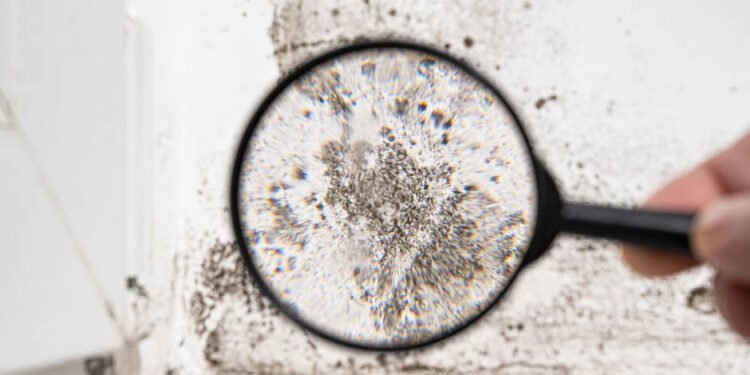Mould is a type of fungus that can spread in your home if it is frequently warm, humid, and lacking ventilation. It can appear on just about any surface, from wood and plastic to furniture and floor tiles.
It appears in ugly dark spots that can expand quickly if left unchecked, and it can even ruin furniture and weaken walls, beams, and other structural features of your home.
It is also terrible for the health of anyone in your home, especially if that includes infants, elderly people, or those with breathing problems. Here are just some of the negative impact mould can have on your health:
- It can produce allergens and irritants.
- In less severe cases, it can cause symptoms including coughing, wheezing and a shortness of breath.
- In more severe cases, it can make you more susceptible to infections such as aspergillosis, and can lead to diseases such as rhinitis and asthma. There have even been cases where judges have ruled that people died because of prolonged exposure to mould.
Moreover, mould can also affect people’s mental health as well as their physical health. This can happen in several ways, such as:
- Ruining the treasured property and belongings of residents.
- Making people physically ill or making them care for someone else who is, which causes stress and anxiety.
- Stopping people from inviting visitors round to their home, which can leave them feeling socially isolated.
Treating mould:
You can clean mould off of walls, but remember that it produces airborne spores that you really don’t want to be coming into contact with. Before you begin, make sure to wear a mask, goggles, and rubber gloves. Open any windows in the mouldy room, but close the door to prevent it spreading elsewhere in your house.
The best solution you can do without professional help is to use an effective wall mould remover. This is a product specifically designed for the task which can kill the mould and disinfect the surface. However, provided you are wearing some personal protective equipment, you can also use a cloth and some soapy water to wipe the mould off. This tends to work temporarily, and for the best results remember to dry the wall with a clean cloth after. The clothes should then be thrown away, and your clothes and equipment thoroughly cleaned.
Wipe down or hoover the rest of the surfaces in the room too, in case the spores have landed in them.
Preventing mould:
As with many problems, it is easier to prevent mould altogether than to fix it when it appears. Here are some things you can do to help:
- Open your windows: Mould doesn’t do well in well-ventilated houses where there is constant airflow. Even just opening them on dry days can be enough.
- Dry wet areas: Mould loves damp and wet surfaces. Dry your bathroom floor if it is wet after you’ve used it, and mop up spilled liquids right away.
- Keep your plumbing well maintained: Regularly inspect any pipes both inside and out for leaks.
Managing mould by yourself is possible if you catch it early enough. For large amounts of mould, or if it is already affecting the health of somebody in your home, seek professional help.












